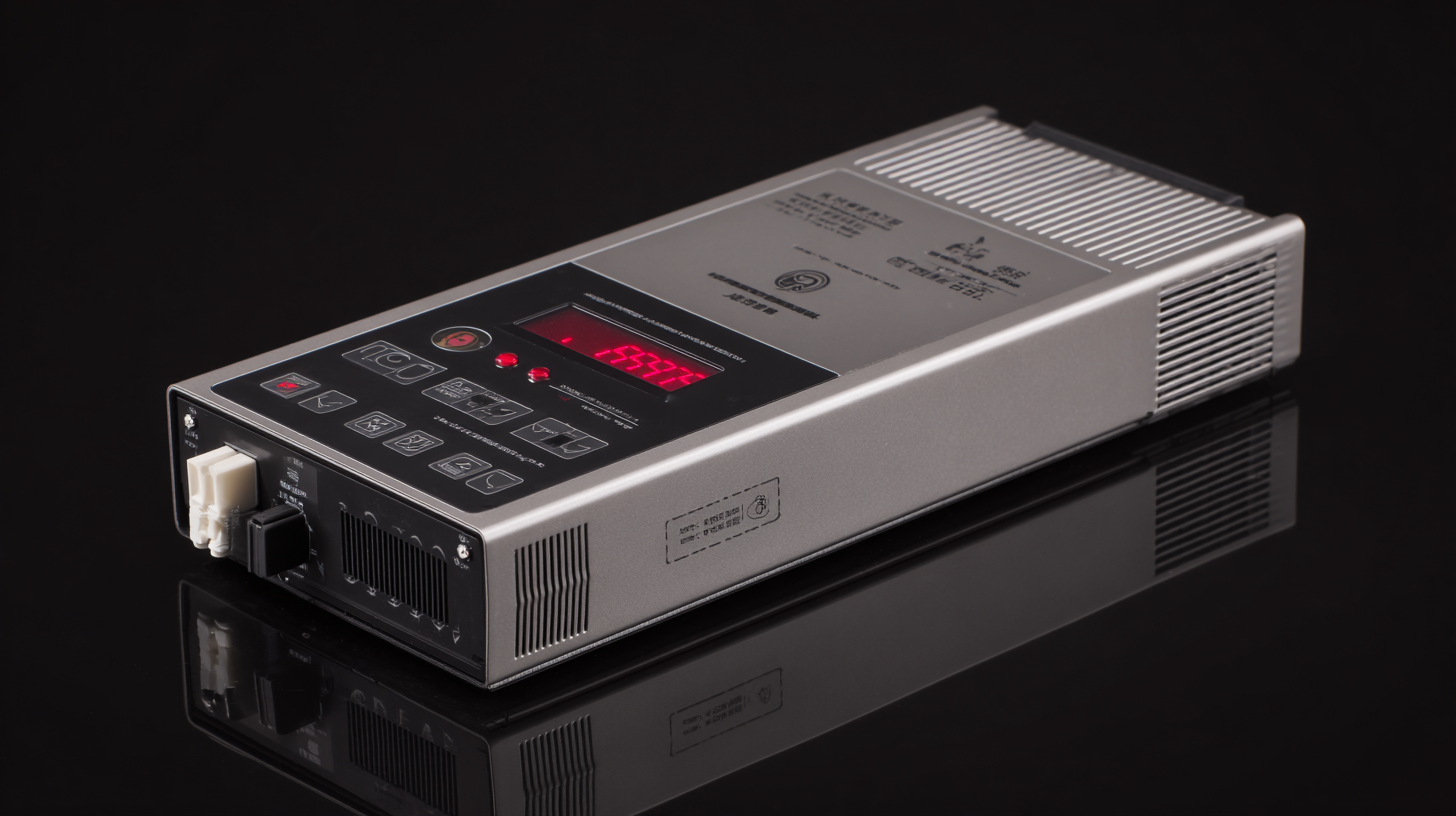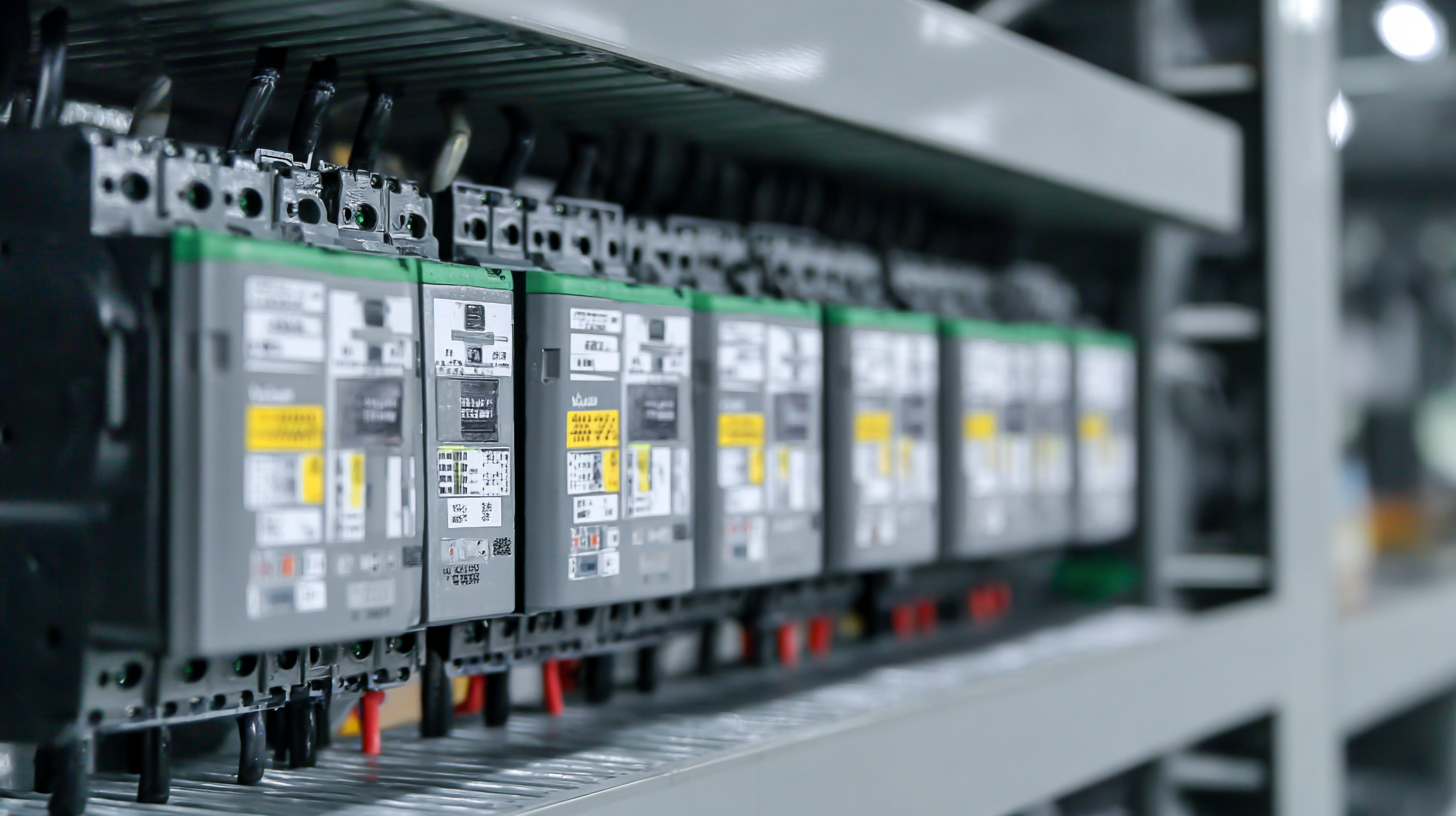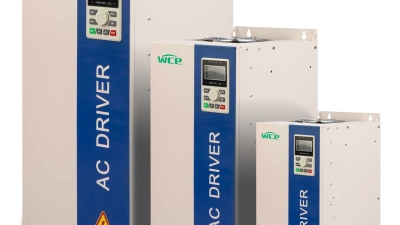How to Choose the Best China VFD for Your Industrial Needs: A Comprehensive Guide
Table of Contents
- Understanding Variable Frequency Drives: Key Concepts and Benefits
- Key Technical Specifications to Consider When Selecting a VFD
- Types of China VFDs: Which One Suits Your Industrial Applications?
- Evaluating VFD Performance: Efficiency, Control, and Durability
- Cost Analysis: Balancing Quality and Budget for Your VFD Purchase
- Maintenance Tips for Maximizing the Lifespan of Your VFD System
- Maximize Motor Efficiency: Exploring the Benefits of the General VFD 55kW 380V 3Phase Inverter Frequency Converter
- FAQS
- Related Posts
You know, these days, with the industrial world changing so fast, everyone’s looking for automation solutions that are not just reliable but also super efficient. I came across a recent report from MarketsandMarkets—it predicts that the global market for variable frequency drives (VFDs) could hit around 28.3 billion USD by 2026, growing at about 5.6% each year. As more industries dive into automation, picking the right VFD from China is becoming more and more important to get the best performance and save energy. I’ve been in the game for over 15 years, and I can tell you, Zhejiang Chuanken Electric has really made a name for itself—it's a high-tech company that focuses on designing, developing, and selling industrial automation control products. This guide is meant to walk you through the many benefits of different types of China VFDs, so you can make smarter decisions that fit your specific needs and get your industrial stuff running smoothly.

Understanding Variable Frequency Drives: Key Concepts and Benefits
Variable Frequency Drives, or VFDs for short, are pretty much a staple in today’s industrial world. They give you way more control over how motors run, helping with both efficiency and performance. Basically, what they do is tweak the frequency and voltage going to the motor, so you can dial in the perfect speed every time. Not only does this save energy, but it also helps your equipment last longer since there's less strain and wear over time. If you wanna understand these technologies better, it’s good to get a grip on things like modulation techniques and control methods — those are key if you want to pick the right drive for your setup.
Now, the perks of using VFDs are pretty impressive. They boost how well your motors perform, which in turn cuts down on your energy bills. Plus, being able to control how fast things ramp up or slow down means less mechanical stress on the machinery, leading to a safer and smoother operation overall. And here’s something cool — VFDs can even help integrate renewable energy sources into existing power systems, aligning with sustainability goals. Basically, getting to know these benefits and how VFDs work makes choosing the right one a lot easier, especially when you’re dealing with diverse industrial needs.
Key Technical Specifications to Consider When Selecting a VFD
When you're choosing a Variable Frequency Drive (VFD) for your industrial setup, it's really important to understand some key technical details. Trust me, getting this right makes a huge difference in making sure your system runs smoothly and efficiently.
First off, you wanna check the power rating and whether the VFD can handle your motor’s voltage. It’s super important to match those specs—whether you're working with single-phase or three-phase power—so everything stays reliable and hassle-free.
Another thing to keep in mind is how the VFD controls the motor. There are a few different methods, like volts per hertz (V/f), vector control, and direct torque control. Each has its pros and cons, depending on what you're trying to do. For example, V/f is pretty simple and budget-friendly, but if you need more Precision for complex tasks, vector control might be the way to go. Also, don’t forget to check the frequency ranges it can handle and whether it can cope with overloads. All these little details make a big difference, especially if you want something that works now and can adapt to future needs or changes in your industrial process.
Types of China VFDs: Which One Suits Your Industrial Applications?
When you're trying to pick out the perfect Variable Frequency Drive (VFD) for industrial uses, it’s pretty important to understand the different types out there. The VFD market is actually expected to grow quite a bit—some estimates say it’ll hit around $32 billion by 2030. That’s mainly because more industries, like marine ships and offshore platforms, need these drives for things like fans and compressors. There are a few main types of VFDs—like AC Drives, DC Drives, and Servo Drives—and each one is suited for different kinds of jobs. For example, AC Drives are especially good when you need to control power and speed smoothly.
Looking at the Asia-Pacific region, it’s likely to see some pretty big advances in VFD technology and usage, thanks to its booming industrial scene. From what I’ve read, the market here is going to keep expanding, with a focus on saving energy and being adaptable. Plus, the global market for AC motors is set to grow from around $4.6 billion in 2024 to about $6.6 billion in 2029—just goes to show how important it is to pick the right VFD for optimizing motor performance.
Whether you’re trying to save energy with pumps or working on HVAC systems, knowing your options with VFDs can really help you get things done efficiently and without a fuss.
Evaluating VFD Performance: Efficiency, Control, and Durability
When you're trying to pick out a Variable Frequency Drive (VFD) for industrial use, it’s super important to really look at how well it performs — things like efficiency, control, and how tough it is. According to some report by MarketsandMarkets, the VFD market is actually expected to hit around USD 19.5 billion by 2027, mainly because everyone’s after energy-efficient solutions these days. Honestly, many VFDs nowadays boast efficiency ratings over 95%, which can save you quite a bit on energy costs in the long run. Going for a high-efficiency VFD isn’t just good for your wallet; it also helps make your manufacturing more eco-friendly and sustainable.

Now, control features are also a big deal when it comes to VFD performance. Some of the more advanced models give you much better control over motor speed and torque — which is pretty crucial if you need things to be just right. A study from Schneider Electric even points out that having precise control can boost your manufacturing output by up to 30%. So, if you’re choosing a VFD, look for options like vector control or built-in PID control — they can help keep your processes running smoothly and respond quickly when needed.
A little tip: Before you go ahead and buy, make sure to check how easily the VFD will work with your existing systems. That way, you can avoid headaches down the line.
And don’t forget about durability, especially if your environment is pretty tough. There are reports showing that VFDs built with rugged enclosures can handle extreme temperatures and dusty conditions — which means they'll last longer. Picking brands that have solid certifications, like ISO 9001, usually means you’re getting a more reliable product.
Another tip: Always have a look at warranty details and service options. They can give you a good idea of how confident the manufacturer is about their product’s durability — and how easy it’ll be to get help if something goes wrong.
Cost Analysis: Balancing Quality and Budget for Your VFD Purchase
Thinking about getting a Variable Frequency Drive (VFD) for your industrial setup? Well, it’s pretty much a balancing act between quality and what you’re willing to spend. The global market for VFDs is booming, with projections saying it’ll hit around $32 billion by 2025. That just shows how important these drives are becoming for making operations more efficient and saving energy across different industries. But with so many options out there, it’s definitely worth taking the time to do a proper cost analysis—so you invest wisely.
A good tip is to compare the features and performance of different VFDs relative to their price tags. Sure, some models might seem expensive at first, but honestly, spending a bit more upfront on a quality drive can save you a ton down the line — think less maintenance and lower energy bills. Also, don’t forget to consider the whole picture, including installation costs, how well it runs day-to-day, and what happens if things go down temporarily. Finding that sweet spot between a reliable product and your budget is key. It’s all about making smart choices now that will pay off big time in the long run, both in efficiency and peace of mind.

Maintenance Tips for Maximizing the Lifespan of Your VFD System
When it comes to taking care of variable frequency drives (VFDs), making sure they last long enough is pretty much essential if you wanna keep your industrial operations running smoothly. I read somewhere from the International Society of Automation (ISA) that with proper maintenance, you can actually extend the life of your VFD systems by up to half—crazy, right? Anyway, the key is regular check-ups and catching problems early. That means inspecting electrical connections, keeping an eye on cooling systems, and making sure the VFD’s environment isn’t cluttered with dust or moisture — stuff that can really mess with how well it performs and how reliable it is.
Another biggie is keeping the software up-to-date. According to a survey from the Electrical Apparatus Service Association (EASA), around 30% of VFD failures are actually tied to outdated firmware or software bugs. So, updating the system isn’t just about security; it also boosts performance, helps save energy, and cuts down operational costs. Plus, giving your team regular training can make a huge difference. When folks know what to look out for, they can spot trouble early on and fix it before things get out of hand, which really helps protect your investment in this tech.
Maximize Motor Efficiency: Exploring the Benefits of the General VFD 55kW 380V 3Phase Inverter Frequency Converter
In the quest to maximize motor efficiency, the adoption of advanced technology is paramount. The General VFD 55kW 380V 3-Phase Inverter Frequency Converter stands out as a prime solution for industries looking to enhance performance and reduce energy consumption. By offering precise control over motor speed and torque, this inverter plays a crucial role in optimizing operational efficiency. According to a recent industry report, implementing variable frequency drives (VFDs) can lead to energy savings of 20% to 50%, significantly lowering operational costs while also contributing to reduced greenhouse gas emissions.
The SHCKELE SCK300 model, with its general type specification, embodies the benefits outlined above. With an 18-month warranty, users can feel confident in the reliability and longevity of this product. This inverter not only regulates motor speed but also provides advanced diagnostic capabilities and increased operational flexibility. Reports suggest that employing such technology can enhance motor lifespan and reduce maintenance costs, further underscoring the value of investing in quality frequency converters.
In addition to the immediate energy-saving benefits, utilizing products like the General VFD can facilitate compliance with increasingly stringent environmental regulations. As businesses strive for sustainability, tools that improve energy efficiency and reduce waste will become indispensable. The SHCKELE SCK300 is not just an investment in machinery, but a commitment to embracing the future of energy management and operational excellence.
FAQS
: VFDs are devices that control the speed and efficiency of electric motors by adjusting the frequency and voltage supplied to them.
VFDs optimize motor performance, reduce energy consumption, lower operational costs, minimize mechanical stress, and facilitate the integration of renewable energy sources.
By optimizing motor performance and enabling precise speed regulation, VFDs can significantly lower energy consumption, leading to reduced operational costs.
Key factors include efficiency ratings, control capabilities, and durability of the VFD. High efficiency ratings can lead to significant energy savings, while advanced control options allow for precise motor adjustments.
Proper maintenance, including regular inspections and timely servicing, can extend the lifespan of VFD systems by up to 50% by ensuring optimal performance and reliability.
Keeping VFD software updated can prevent failures (as about 30% of VFD issues are linked to outdated software), enhance performance features, and improve energy efficiency.
Tips include regularly inspecting electrical connections, monitoring cooling systems, ensuring a clean environment free of dust and moisture, and implementing personnel training programs for early issue detection.
Selecting a VFD with high efficiency ratings and advanced control features can lead to significant reductions in energy consumption and operational costs over time.
Durability is crucial as VFDs in challenging environments must withstand extreme conditions; choosing robustly designed VFDs can significantly extend their lifespan.
Certifications such as ISO 9001 can be indicators of quality and reliability, ensuring that the VFDs meet industry standards for performance and durability.
Related Posts
-

Step-by-Step Guide to Sourcing the Best China VFD for Your Business Needs
-

Solutions for Optimizing Performance with Best Vfd Software
-

Top Strategies for Optimizing Your Operations with the Best Inverter 220V 380V VFD
-

Leading VFD Pump Controller Manufacturers from China at the 137th Canton Fair
-

Elevate Your Manufacturing Efficiency with Best Control Technique Vfd from Chinas Leading Exporter
-

The Ultimate Guide to Selecting the Best Vfd Controller for Your Industrial Needs


